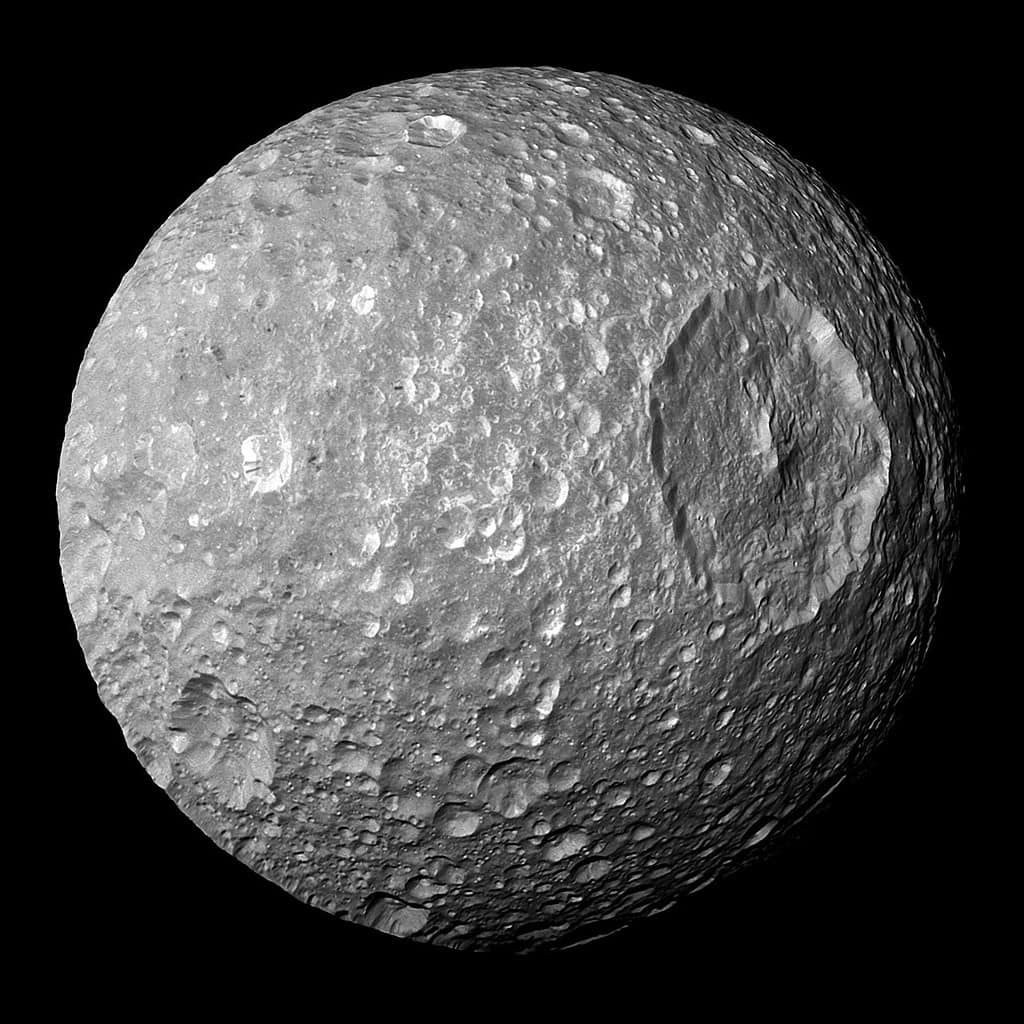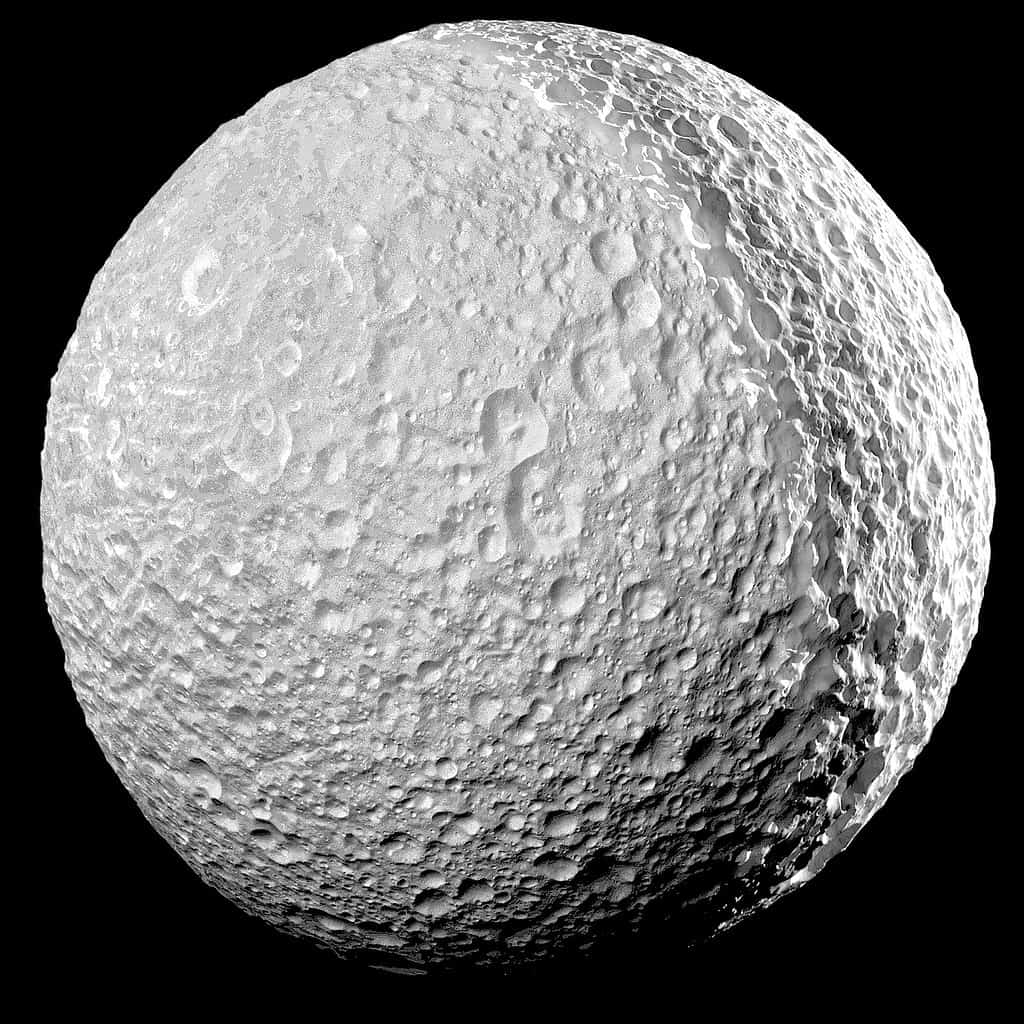
Saturn’s moon Mimas was once thought to be a frozen, inert world. It’s also quite small — it’s the smallest astronomical body known to be roughly rounded in shape due to its own gravity — and yet, it just became very interesting. Mimas, previously considered a barren small moon, now presents a compelling case study for liquid water.
Moon and oceans
In recent years, astronomers have found growing evidence that some moons may have oceans beneath their frozen surfaces. Places like Europa or Enceladus are probably our best bets of finding extraterrestrial life in our solar system. But Mimas is definitely an unlikely choice.
The surface area of Mimas is slightly less than the land area of Spain or the state of California. Being a moon of Saturn, it’s far from the Sun, so it’s also frozen. Its orbit suggests a very low density, so Mimas likely consists of ice and a bit of rock. Now, apparently, there’s also water.

In the new study, researchers led by Valery Lainey from the Observatoire de Paris analyzed the rotational motion and the orbit of Mimas, looking at how different composition models of Mimas could explain this behavior.
By analyzing the moon’s libration, or wobble, in combination with its orbital behavior and the gravitational pull exerted on and by Saturn, the study revealed surprising characteristics of the hidden ocean. The analysis indicated that Mimas’s ocean is likely 20-30 kilometers (12.4-18.6 miles) beneath its surface and less than 25 million years old. This suggests recent geological activity or heating mechanisms that could sustain such an environment.
“Identifying Mimas’s stealth ocean required Lainey et al. to analyse precise measurements of changes in the moon’s orbit and rotation, which are affected by the makeup of its interior,” write Matija Ćuk and Alyssa Rose Rhoden, who were not involved in the research, in an accompanying News & Views article. These changes can be tracked by measuring the moon’s moments of inertia, which measure its resistance to rotational acceleration, and depend on both the moon’s surface shape and how matter is distributed inside it.

The ocean is also relatively new, which is important. In geological time, 25 million years is not many, and the fact that the ocean is new means it hasn’t yet produced any signs that are visible on the surface.
If this is the case, then there could be other similar moons with oceans beneath their surface.
Mimas’s newly discovered ocean has profound implications for the study of celestial bodies across the solar system. It prompts a reevaluation of other mid-sized icy moons, which may also harbor hidden oceans and, by extension, the potential for life. This discovery underscores the need for future space missions to include instruments capable of detecting subsurface oceans and encourages a more open-minded approach to where life might be found.
The study was published in Nature.


